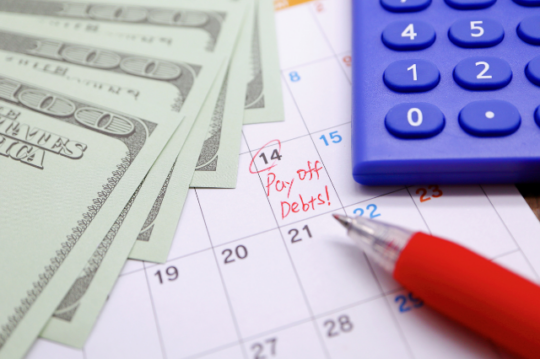Debt can be a useful tool if you know how to leverage it. Student loans help pay for the MBA or law degree, so you can earn more for life. A mortgage helps you buy a stable home for your family.
But often, it will leave you feeling overwhelmed and unable to reach your financial goals. Too much debt can be a crushing burden. Balances pile up on high interest credit cards. A second mortgage means you’re underwater on your house.
With too many payments, all your money goes out for debt and there’s not enough to live on. A debt management plan can help you learn how to use debt the right way.
Paying Interest Means Losing Money
When you pay interest on debt, you’re effectively getting a negative return on your money. If you’re paying 15% interest on a credit card with a $10,000 balance, you’re losing 15%, or $1,500, every year you keep that balance. When you clear out the debt and get to zero, it’s the equivalent of a 15% gain. No other investment can guarantee you a 15% gain on your money.
Paying the Minimum Is a Bad Idea
You’ll never get ahead if you continue to make minimum payments on your debt. Let’s say you make a minimum payment of $300 every month for the entire life of your $15,000 loan with a 15% interest rate. It will take you almost 40 years to pay off the balance, and you’ll pay over $24,000 in interest.
Pay an extra $150 a month, and you’ll pay the whole thing off in about 3.5 years — less than one tenth of the time.
How to Pay Off Debt
So if you’ve decided to finally tackle your debt, what’s the best way to go about it? Well, first you need to know where you stand. Make a list of all your debts, their current balances, and their interest rates.
Let’s say you have a mortgage, two student loans, a car loan, and a few credit cards. Your list might look something like this:
- Mortgage: $160,000 @3.8%, $745.33 per month
- Student Loan: $2,000 @6%, $22.20 per month
- Car: $14,000 @5%, $264.20 per month
- Credit Card: 1: $10,000 @20%, $200 per month
- Credit Card 2: $450 @25%, $25 per month
- Credit Card 3: $1,000 @19%, $25 per month
When you add everything up, it might be a shock to see exactly how much debt you have. But remember, we all have to start somewhere. Getting a big-picture overview is the only way to understand where you’re at — so you can create a plan to get to where you want to go.
Pay Off the Higher Interest Rate Debts First
One way to tackle the paying off debt is pay of your debts from highest interest rate to lowest interest rate. This is often called the avalanche method.
You pay off the one with the highest interest rate first with all of your extra money, and then you move on to the next one. Your payment plan would look something like this:
- Credit Card 2: $450 @25%, $25 per month
- Credit Card: 1: $10,000 @20%, $200 per month
- Credit Card 3: $1,000 @19%, $25 per month
- Student Loan: $2,000 @6%, $22.20 per month
- Car: $14,000 @5%, $264.20 per month
- Mortgage: $160,000 @3.8%, $745.33 per month
If you pay off your debt like this, you’ll pay the least amount in interest. But since you might be stuck for several months on one loan, it can sometimes be easy to get discouraged. If you can find other ways to motivate yourself, this might be the right way for you!
In this example, if you were to put an extra $750 towards debt every month, you’d pay off everything but the mortgage in 24 months, and you’d pay $2,475.42 in interest.
Pay Off the Lowest Balance First
Another way to pay off your debt is to tackle each debt one at a time by focusing on the lowest balances first. This method is called the debt snowball, as popularized by personal finance guru Dave Ramsey.
By focusing on the lowest balances first, you’ll soon eliminate a few payments. When cash flow is tight, it feels great to know you’ll never have to pay that debt again!
If you choose to pay off your debts like this, your debt payment list will look like this:
- Credit Card 2: $450 @25%, $25 per month
- Credit Card 3: $1,000 @19%, $25 per month
- Student Loan: $2,000 @6%, $22.20 per month
- Credit Card: 1: $10,000 @20%, $200 per month
- Car: $14,000 @5%, $264.20 per month
You’d tackle your mortgage after paying off these six smaller debts.
By paying off your loans in this order with an extra $750, you’ll pay off your debts in 24 months with $2,754.22 in interest paid. Unless you have one big whopper of a loan with a high interest rate, you won’t pay much more in interest to get rid of those payments.
Debt Management is an Important Part of Building Wealth
If you want to be wealthy someday, you’ll need to learn how to manage your debt. Stop paying the minimum payments, and put everything you can towards destroying those loans.

